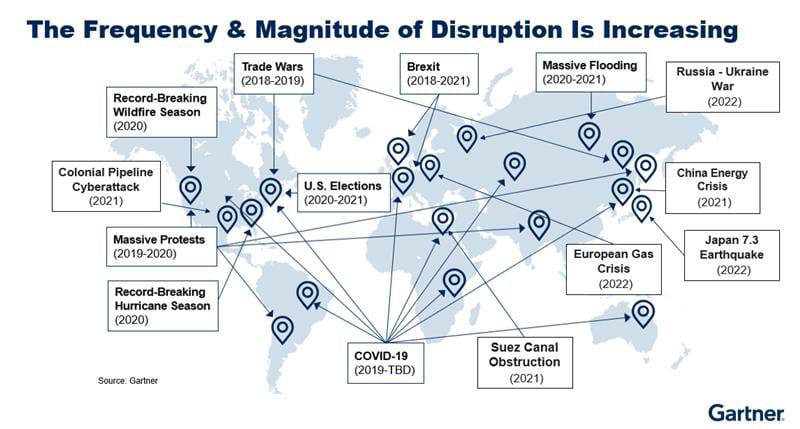The economy has had a trying time over the past few years.
- The 6+ day blockage of the Suez Canal in 2021 is estimated to have cost 12 per cent of global trade – holding up trade valued at over $9 billion per day, according to data from Lloyd’s list[1].
- The global pandemic undoubtedly took its toll on businesses worldwide, challenging companies in many ways. For many, this led to operational changes with WFH and office rota systems, many of which are still in place today. Changes and investments in IT setups and technologies to support collaborative working in isolated environments were hastily implemented.
- The war in Ukraine has affected many businesses, some hit hard with a complete retreat from operating in Russia. The impact sees worldwide energy prices escalate, with bills continuing to rise for consumers and businesses, and countries that rely on exports from Russia or the Ukraine scrambling to find new supplies.
- China – the worlds factory – closing down ports and supply chains that were already under Covid induced stress, and pushing delivery lead times for components and finished goods to new records.
- And of course, there’s the UK’s Brexit from the European Union, for which the biggest impact appears to be the lost of labour, leaving many sectors struggling to fill job vacancies.
Any one of these events would have been classed as a one-time blip in the economy. The last few years have seen us battling with not just these five – but many more – the frequency and magnitude of disruption is increasing, as illustrated by Gartner® here:

Gartner® paper on “What CFOs Need to Know About Today’s Supply Chain Environment”
The ultimate results of these disruptions are increased costs and price inflation. Businesses need to adapt, amend operational activities and operating models, address changes in buying cycles, address workforce challenges.
Financial planning is key to survival. If you’re relying on using spreadsheets to transition your business through these trying times, you could find yourself facing greater challenges than you need. Our whitepaper highlights the benefits of an automated, agile and centralized cross functional planning capability brings, to aid success for businesses in testing times.
Download
Sources
Image Source: Gartner® from Paper entitled: What CFOs Need to Know About Today’s Supply Chain Environment.

